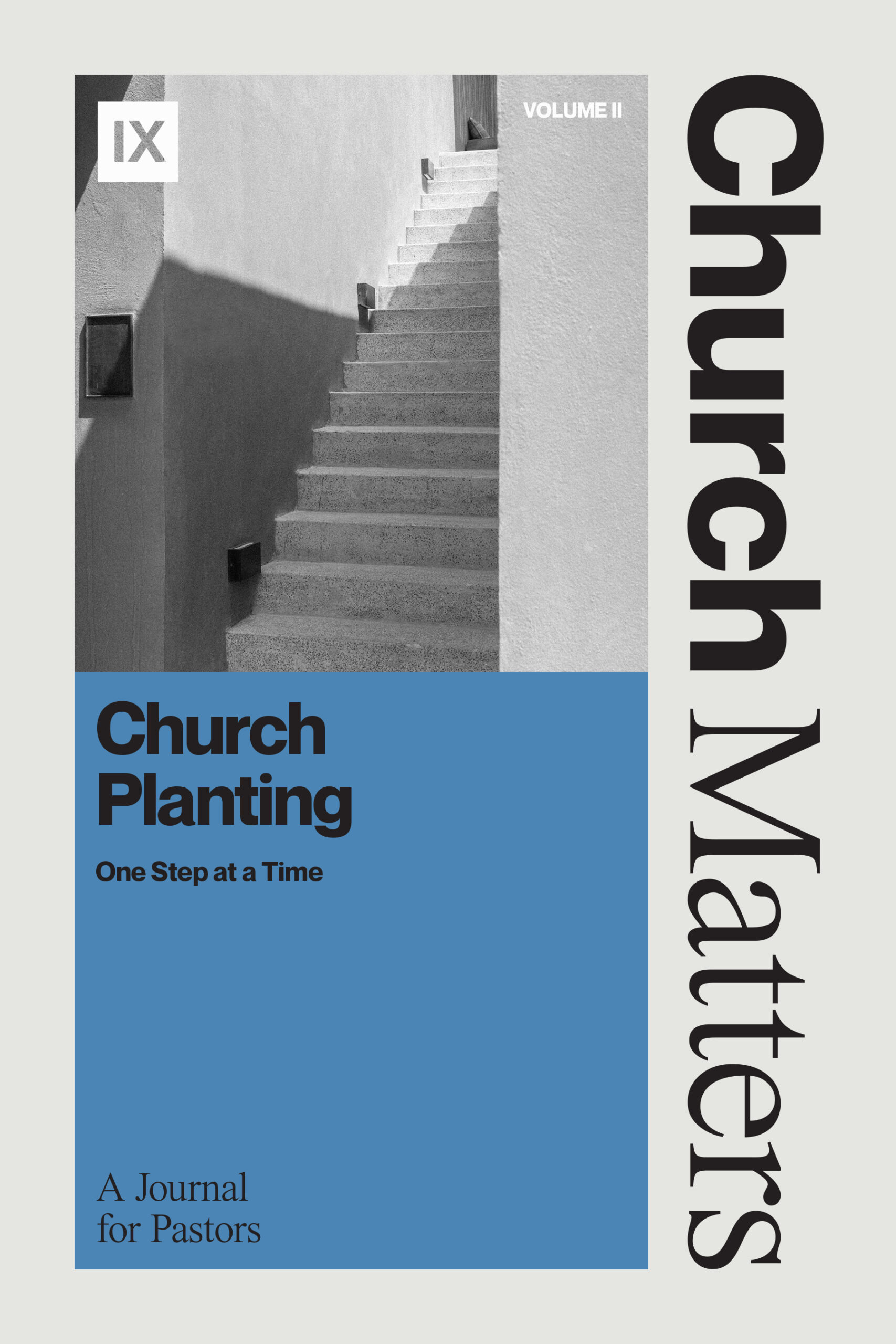Sending Out Future Leaders Strategically
Ask most kids what they want to be when they grow up, and they’ll tell you: Astronaut. Storm chaser. Lego maker. It’s cute, but not realistic.
Ask seminarians or young leaders in the church this question, and they’ll fumble through some possible scenarios. Plant a church. Revitalize a dying church. Pastor an established congregation. Many just aren’t sure where and how their gifts are most suited for the work.
Pastors developing future leaders can help using these seven diagnostic questions. In so doing, they will send future leaders more strategically.
1. Is he a pastor or does he like the thought of being a pastor?
This is the question. We must always start here. Every future pastor must first meet the biblical qualifications for the character and competence of one who is entrusted with leadership in the church (1 Tim. 3:1–7; Titus 1:3–7; 1 Pet. 5:1–11). What is a church planter if not a pastor of God’s people? What is a church revitalizer, re-planter, established church pastor if not one entrusted to shepherd the flock of God?
In many ways, the stark dichotomy between church planting and revitalization creates a distinction that confuses rather than helps. Both planters and revitalizers must aspire to the qualifications of the office of pastor and not merely some form of the work they believe fits their gifts or abilities.
So start here. Force future leaders to grapple with the hard work of character development. See if they possess a genuine love for the people of God. Watch how they invest as meaningful members of the church. Allow pastors to distinguish themselves as pastors before you put them in subcategories of ways they can deploy their pastoral function.
2. Is he more effective at making something from nothing or taking something and making it better?
Once we know we have a pastor, then we can talk about specialization. It’s true that some pastors are better church planters, others better revitalizers, and still others better at stepping into a relatively healthy, established church. This shouldn’t suggest that an effective planter could not also revitalize, or that one apt in revitalization might not be able to plant a church. But it’s wise to consider how best to deploy the dominant strength of those we send.
Planters start with nothing—no systems, no structure, no people—and build from scratch. Some pastors enjoy the freedom, creativity, and faith that this work requires. Revitalizers, on the other hand, step into something that is broken and bring structure, order, and health. Those with this leaning tend to find joy in the patient toil required to identify the problems, build unity, and redirect energy.
The best way to discern which of these fits a future leader is to look at the track record of his life and see where he’s experienced joy and seen fruit in the past. If past ministry doesn’t give indication, then the current church provides a context for experimentation. Give future leaders something that is broken and see what they do with it or give them a vision for something that doesn’t exist and see if they can bring it to life.
3. Does he relate better with insiders or outsiders?
It’s not if pastors will have to lead with vision, but with whom they should start in casting a vision.
Pastors leading established churches toward health will start with an existing nucleus of church attendees. These people may or may not be Christians. They may not be invested meaningfully in God’s mission. Depending on the degree of dysfunction, they’ve likely been hurt by past leaders and may have attached themselves to the organization of the church and not its mission. These pastors will step into this maze of complexity and compel some of these people to redirect their energy to a new vision for the church’s future. They will also cast vision that causes some to opt-out and go elsewhere.
In contrast, church planters start with new relationships. While they may have a church planting team or some early adopters who are believers, these people are far less connected than generational members of an established church. Often church planters will start with non-believers who come to faith and give themselves to the mission. Other times, they will invest in immature Christians who’ve never been discipled and see little value in the church. Who’s drawn to the vision of this leader is a key indicator of where he will thrive.
4. Does he have genuine love for senior saints?
There’s a difference in whether a future leader can be patient with older Christians or whether he truly finds joy in such work.
Patient toil with senior saints will not be optional for revitalizers and established church pastors. They will step into a role where these members are normative. Many may have generational connections to the church. Anyone capable of bringing health to a church will have to engage in the laborious work of fostering relationships, cultivating trust, and giving care to these senior saints.
Planters, on the other hand, have a different challenge when it comes to senior saints. Intentionally or unintentionally, many church plants are comprised of young, early adopters. For a vibrant, multigenerational ministry to take root, however, the church must retain senior saints willing to take a risk in a new congregation. To do so, planters will need to develop the skill of fostering new relationships with both Christians and non-Christians who are much older than them and have no long-standing commitment to the church—or to any church for that matter. It’s not that planters will not need to love senior saints, but they will often be starting from a different place in the relationship.
5. Can he handle a lack of fruit for a season?
A planter will have a lengthy season of sowing gospel seed through evangelism, during which time he may not see a single convert. He will often not have a building or a budget. There won’t be staff or ministry programs for a time. In the early years, a planting pastor must be able to live with the reality that this whole deal could really fall apart tomorrow.
A revitalizer, on the other hand, may inherit a shell of buildings, structures, and programs that could exist for years in the same state of disrepair. The generational solidity of the church likely means that the church isn’t going away tomorrow. But the revitalizer will likely have extended seasons of fruitlessness as well. It takes time to build trust, to earn the right to lead in a new place. The labor to share the gospel and integrate new members into the church will not happen overnight. Purging the membership, installing elders, and streamlining programs all take time.
A future leader is picking his challenge. Where can he best handle the complexity of fruitlessness?
6. How did he fall in love with the church?
Don’t underestimate the future leader’s story in considering where he best fits. Consider where he developed a love for the church and leverage God’s past work to press into future ministry.
For example, a young man who came to faith and grew to love the church through a church plant near his university may long to replicate that work in another place. In contrast, a man who came to faith through a century-old, established church may be drawn to invest in the work of restoring those types of churches to health.
In the same way we tend to give care to others who’ve experienced some of the same pain we have—addicts are drawn to other addicts, the divorced to those in hard marriages, widows to other widows—future leaders are often best suited for a type of ministry birthed out of their story.
7. What opportunities are before you?
Churches should consider what kind of strengths a man might have. Yet they should also simply think about where needs and opportunities exist. Sometimes, the answers we give to the previous six questions might suggest that a man will do best ministering one kind of way. But we’re not all-wise. God is.
Maybe a nearby church has fallen on hard times and needs a pastor, and maybe the only person whose life circumstances would enable him and his family to go is someone your church had slotted as a would-be planter. No doubt, we should consider how a person’s gifts are best deployed. But as Christ’s servants, pastors are pastors, and every one of us should be willing to leverage our lives for the sake of God’s glory among his people in his church in whatever form we are needed.
After all, who you are (pastor) and what you are leading (God’s church) is far more important than where you do the work.
Related Multimedia

Why Bad Polity Hurt My Church Plant
By Phil Newton









